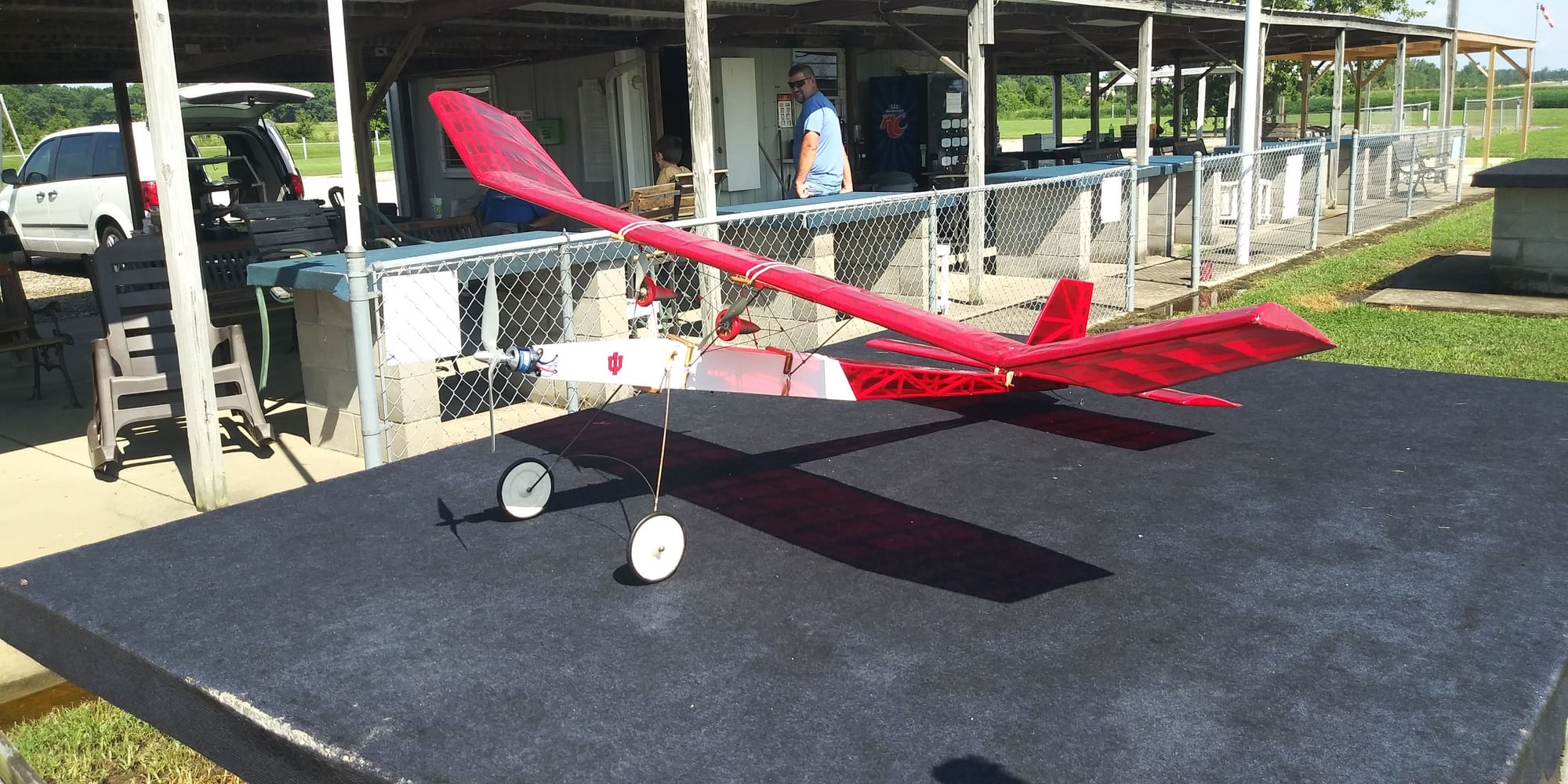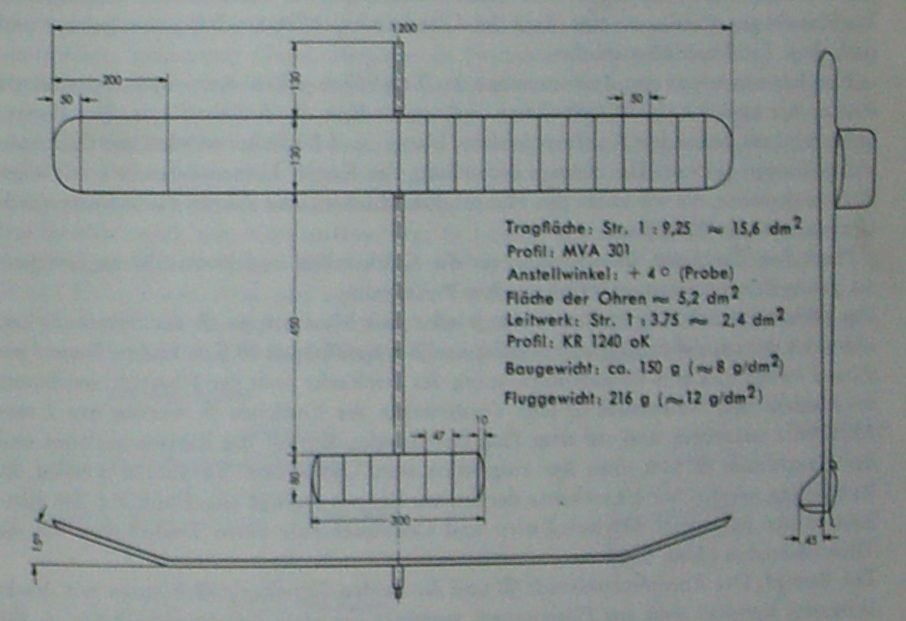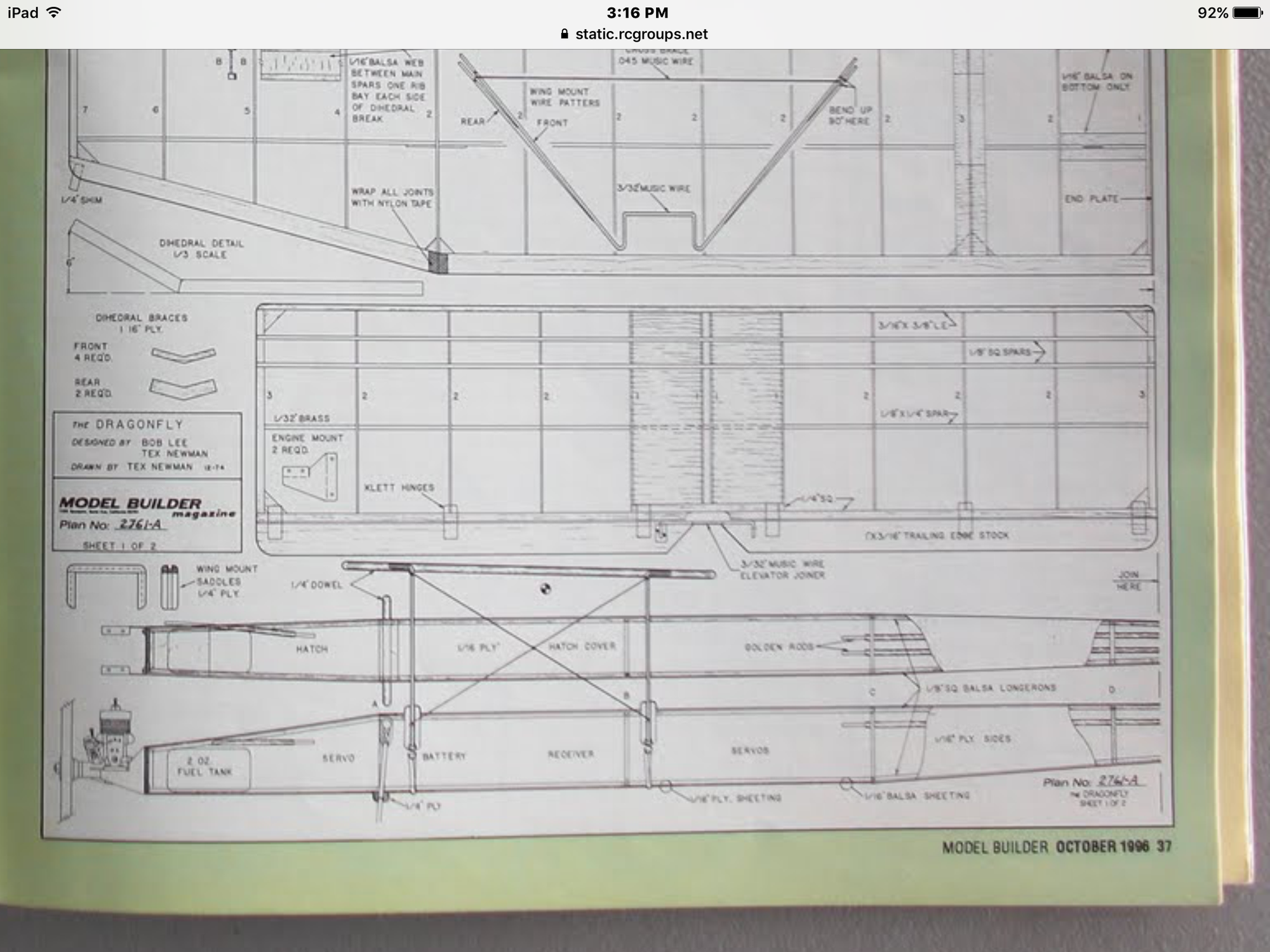What is it and where he cg
#1

Thread Starter
Join Date: Sep 2002
Location: Newburgh,
IN
Posts: 18
Likes: 0
Received 0 Likes
on
0 Posts
Remake of vintage freeflight plane. Fringing to figure what it is and where to start to balance it. It has a very under chambered wing and a flat bottom thick airfoil elevator stab. Thanks




#3
A nose heavy plane flies poorly, a tail heavy plane flies once. You put the CG at 50-60% of chord and you won't fly long.
The CG should be at or forward of the CL, center of lift. Now you can go through all the calculations to determine the center of lift or you can do the simple thing like has been done since the beginning of flight, experiment. Start with the CG at 1/4 chord and move it back until the plane stops flying better each time. With that big tail you can likely get away with start at 30%.
Over 100 years of aviation has shown that aerodynamics is all about experimentation - all the design in the world just gets you a stating point. I used to get paid to do this stuff. My boss and I at Boeing disproved some "hard and fast" rules during wind tunnel testing.
The CG should be at or forward of the CL, center of lift. Now you can go through all the calculations to determine the center of lift or you can do the simple thing like has been done since the beginning of flight, experiment. Start with the CG at 1/4 chord and move it back until the plane stops flying better each time. With that big tail you can likely get away with start at 30%.
Over 100 years of aviation has shown that aerodynamics is all about experimentation - all the design in the world just gets you a stating point. I used to get paid to do this stuff. My boss and I at Boeing disproved some "hard and fast" rules during wind tunnel testing.
#5
Very good advice to start with more forward balance, no doubt. In this case, I wouldn't just start at 25% from leading edge. The "lifting stab" will not lift before the C/G is set far backwards, but its camber and especially the wing's camber make for a lot of nose-down pitch (airfoil moment). That's why such models have a lot of decalage (say 4° incidence difference between wing and stab) and a rearward C/G. This model has a very small elevator, which is undoubtedly enough if balance is OK but may be not powerful enough in case the C/G is very far forward.
The attached pictures show a glider I built in the sixties. It has similar configuration and undercambered wing airfoil. Unfortunately, the plan had to be repaired with tape but I drew a red arrow where the C/G should be. The instructions specify 69% from leading edge. Another well-known example is the Telemaster with (not even undercambered but) flat-bottom airfoil where the neutral point (aft limit of C/G) is at 50%. I would use at least that as a starting point.


The attached pictures show a glider I built in the sixties. It has similar configuration and undercambered wing airfoil. Unfortunately, the plan had to be repaired with tape but I drew a red arrow where the C/G should be. The instructions specify 69% from leading edge. Another well-known example is the Telemaster with (not even undercambered but) flat-bottom airfoil where the neutral point (aft limit of C/G) is at 50%. I would use at least that as a starting point.


Last edited by UStik; 08-03-2020 at 05:05 AM.
The following users liked this post:
R/C Pilot 304 (08-03-2020)
#11

My Feedback: (19)
A nose heavy plane flies poorly, a tail heavy plane flies once. You put the CG at 50-60% of chord and you won't fly long.
The CG should be at or forward of the CL, center of lift. Now you can go through all the calculations to determine the center of lift or you can do the simple thing like has been done since the beginning of flight, experiment. Start with the CG at 1/4 chord and move it back until the plane stops flying better each time. With that big tail you can likely get away with start at 30%.
Over 100 years of aviation has shown that aerodynamics is all about experimentation - all the design in the world just gets you a stating point. I used to get paid to do this stuff. My boss and I at Boeing disproved some "hard and fast" rules during wind tunnel testing.
The CG should be at or forward of the CL, center of lift. Now you can go through all the calculations to determine the center of lift or you can do the simple thing like has been done since the beginning of flight, experiment. Start with the CG at 1/4 chord and move it back until the plane stops flying better each time. With that big tail you can likely get away with start at 30%.
Over 100 years of aviation has shown that aerodynamics is all about experimentation - all the design in the world just gets you a stating point. I used to get paid to do this stuff. My boss and I at Boeing disproved some "hard and fast" rules during wind tunnel testing.





